If you aren’t a farming, grazing, soil building dirt nerd, probably better check out now. If you want to know how we put the sustainable in sustainable farming, this is a post for you.
Back in 2013, we identified some major problems in our operation. We had poor grass coverage, nearly non-existent top soil, and poor animal performance on our forage. We also had some serious erosion issues which were the result of over grazing and over stocking.
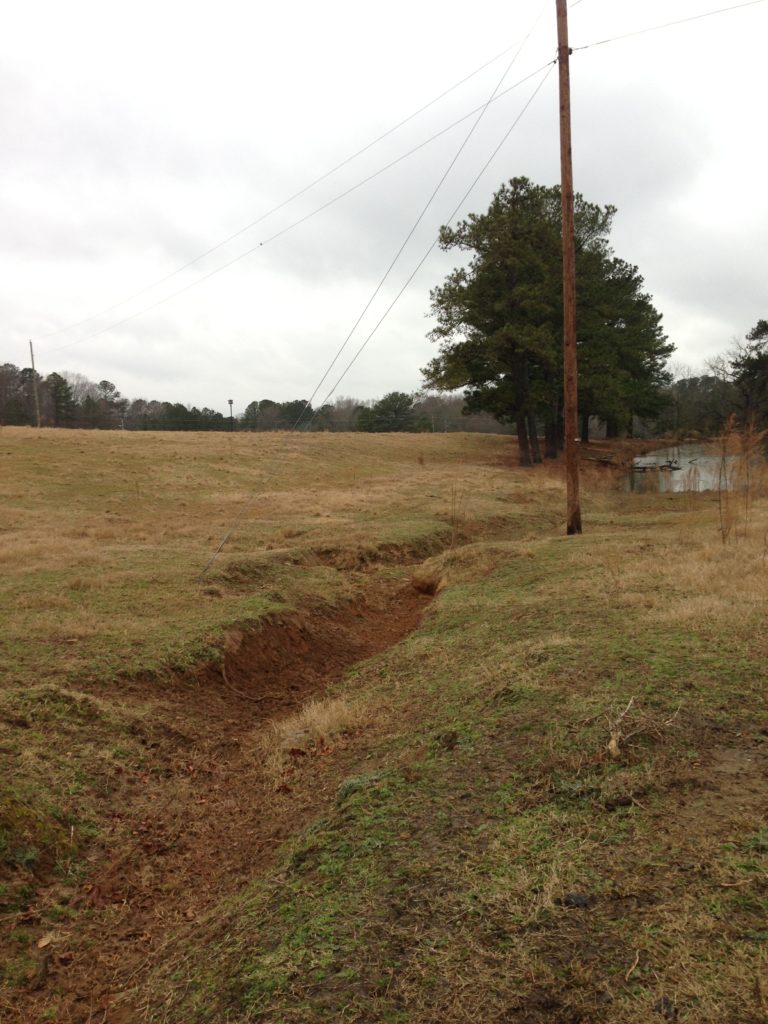
Above you can see a ditch that has formed over 30 years from water flowing across our pasture. Having water on your farm in awesome. The more the merrier. However having it create what amounted to the Grand Canyon across the middle of our pasture wasn’t so welcome.
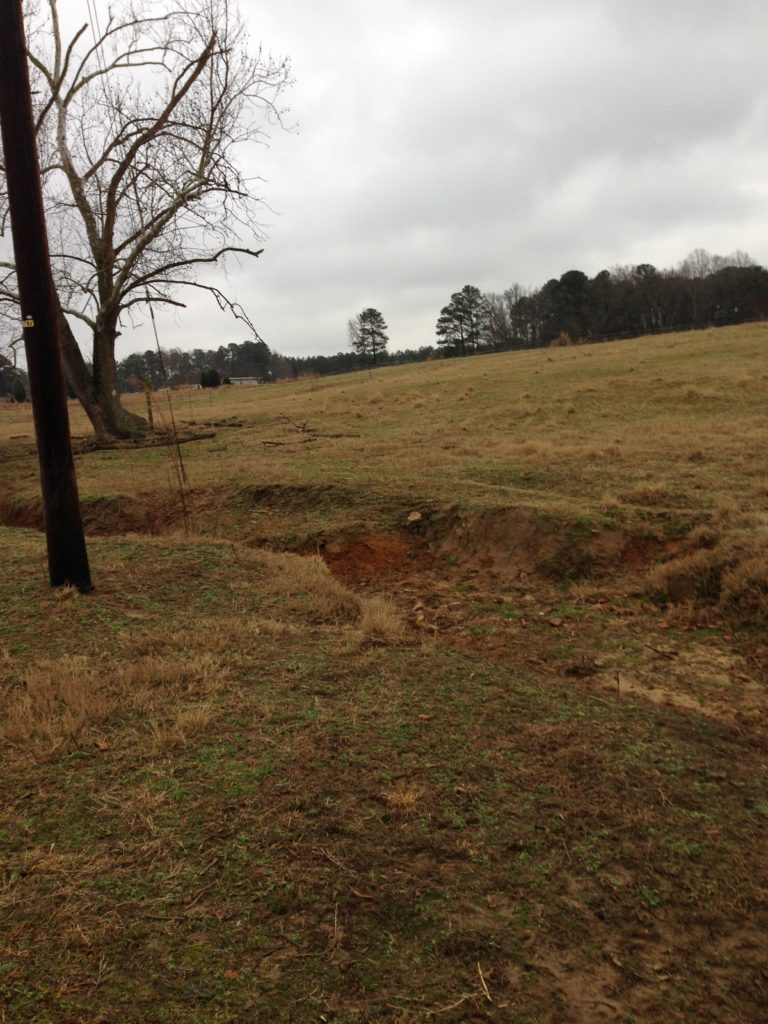
We contacted the Wake County Soil and Water Conservation group and they began working with us on a plan to repair this erosion. But just fixing the erosion wasn’t enough. We needed to keep it from happening again.
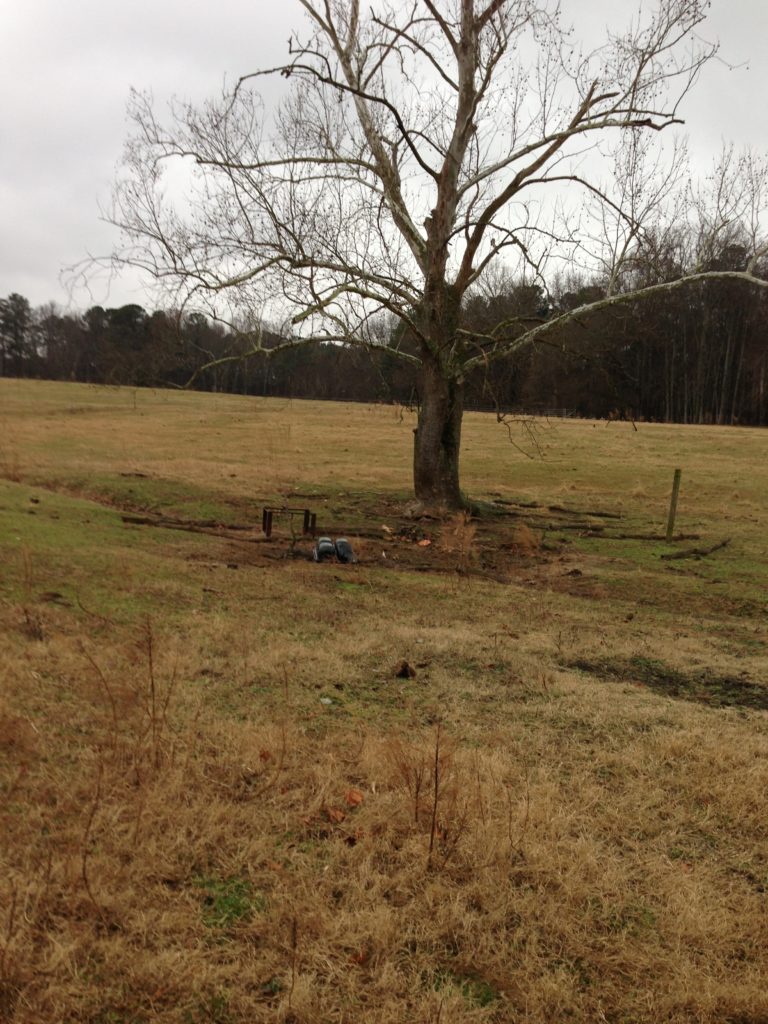
To keep the erosion from coming back, we had to fix the drainage, but we also had to improve our grass coverage, which at that time was about 40%.
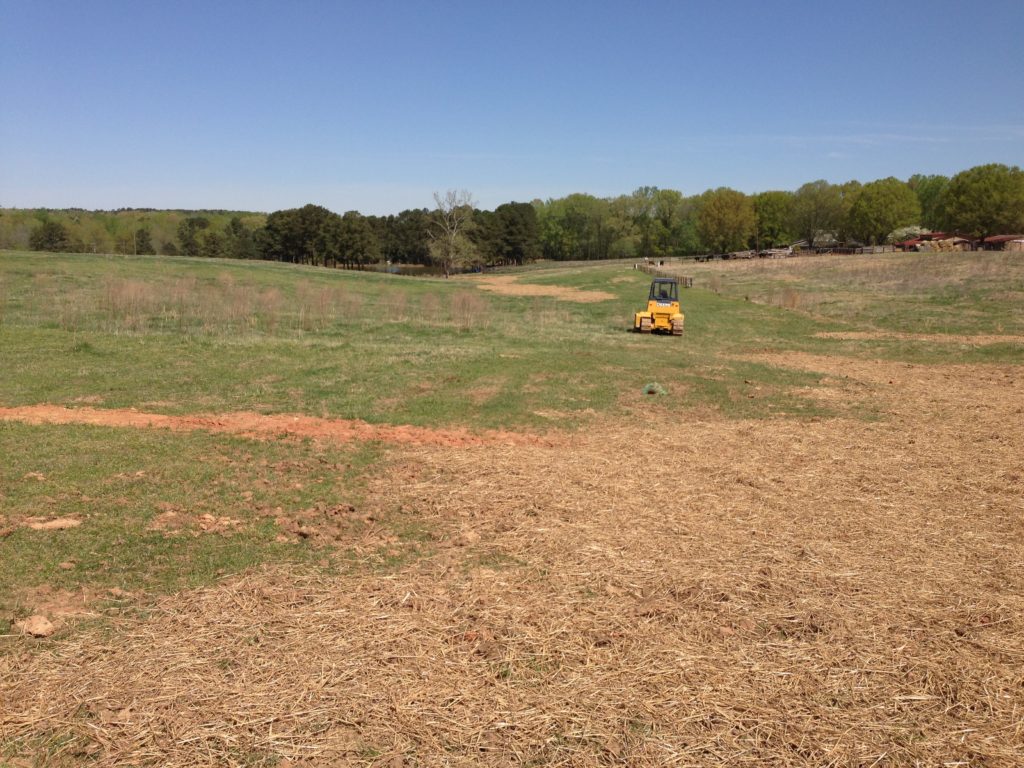
We adopted new management techniques, mainly changing the way we graze our cows, and also composting directly onto the fields with produce, chips, or whatever else we could get with as little effort/cost as possible.
We did seed the area above just after this picture was taken, but mainly the seed didn’t take. The fill dirt was basically useless and wouldn’t grow weeds, much less grass. After 2013, we began spot treating the worst areas with compost to help control erosion and also to improve the soil.
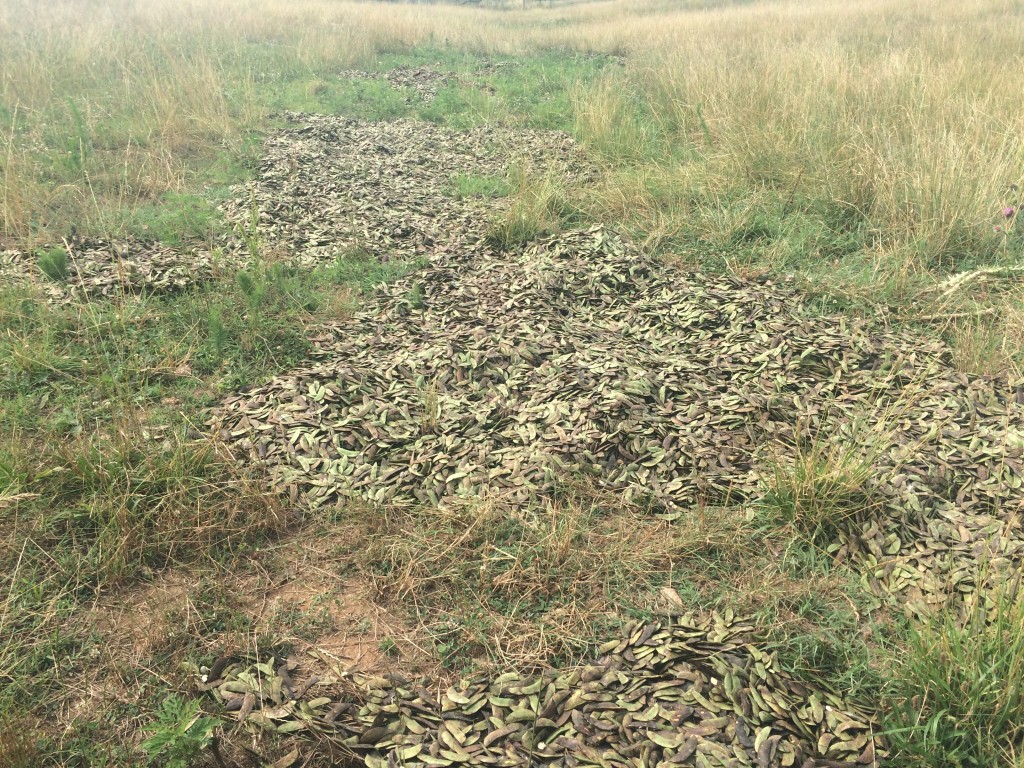
Here is an example of how we’d treat an area. You can see some red in the lower left. All the area covered with beans was exposed, red dirt. No topsoil, no organic matter, no grass. By controlling our grazing, and treating the problem areas over the following years, we’ve taken these problem areas from what you see above to this.
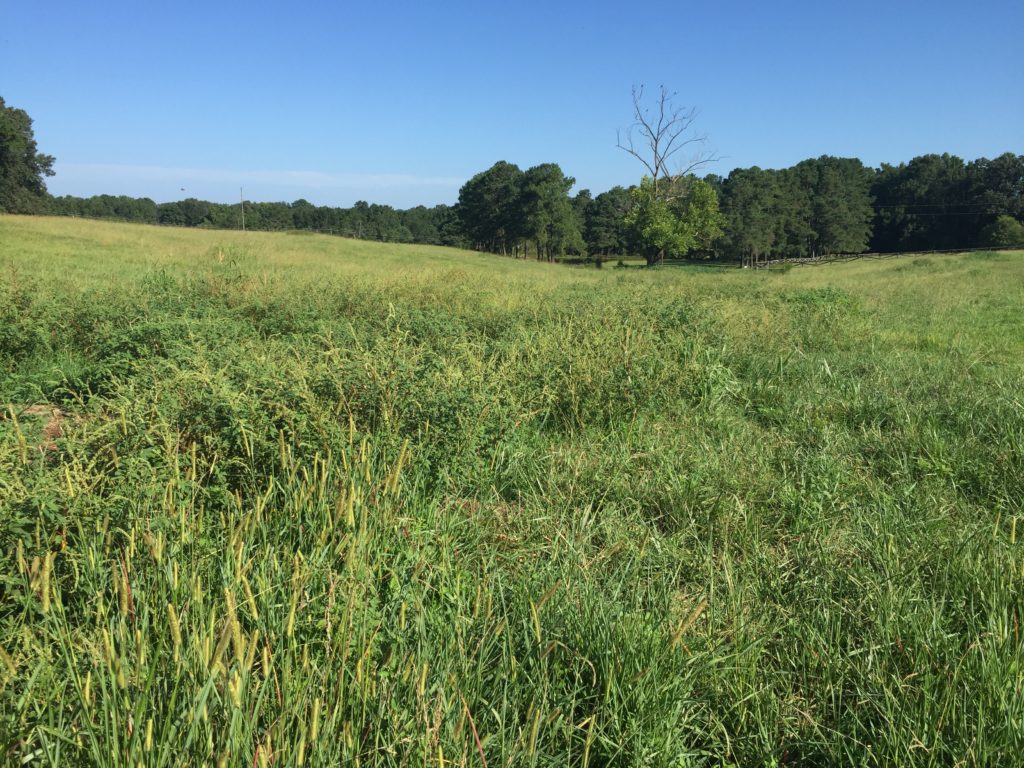
This is basically the same view as the fourth picture. All this growth is not from seeds we planted. It’s also not been left fallow. It has been grazed every single rotation of the cattle since 2013. We now stock at a very dense level, less than one acre per cow (the standard is 3 acres per cow). This was after destocking in 2013 to about 12 cows total on our farm. We now have about 50 to put that in perspective.
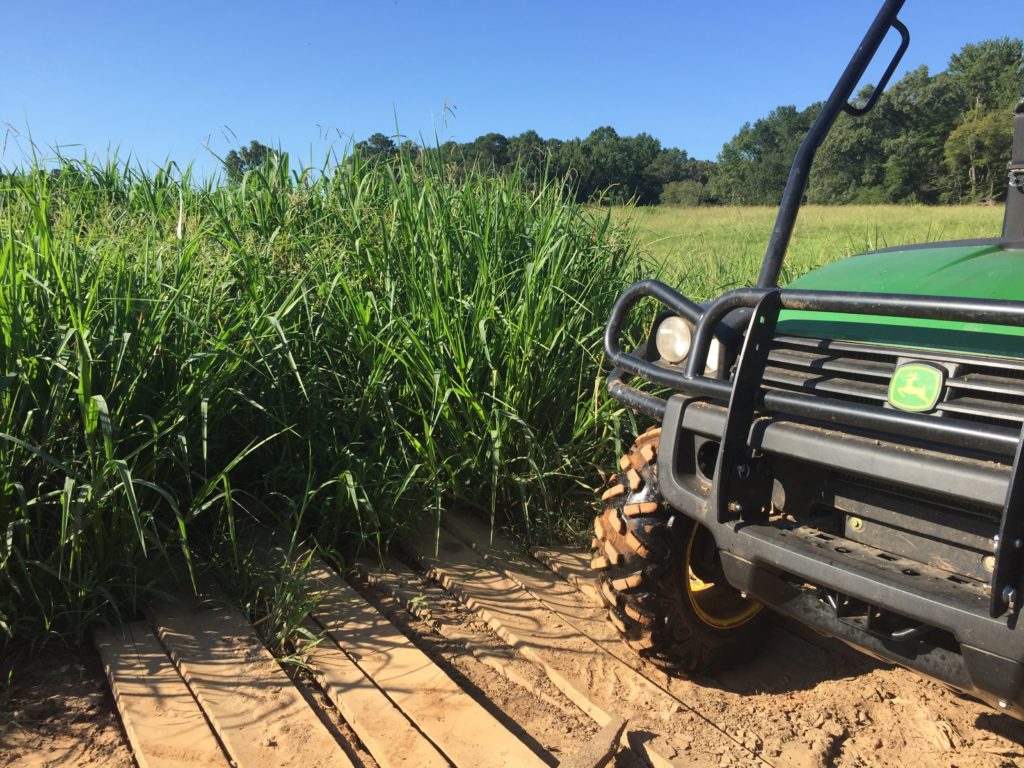
Here you can see our heavily traveled critical area. We put boards down to create a more solid footing. We also limit our movements to crossing in this area on the boards
. The grass you see here that is so tall was bare dirt this spring. I believe it’s actually the area covered in beans I showed you two pictures back. Again, we planted no seeds. We applied no chemical fertilizers, herbicides, pesticides, etc. All we did was manage our cows, and manage the organic matter in the soil. Easy right? So why doesn’t everyone do it? What’s the catch?
It took us three years to get this spot to this growth. That’s three years of an area not producing grass for our animals. In our modern world of quarterly returns and high production, this is simply too long to be acceptable. Better to apply fertilizers, seeds, and get grass to growing. Then spray for weeds when they come up, because they will. For me, I’ll move on to the next area and leave this area alone. It won’t generate weeds because it’s rich in organic matter and the grass is now dominant. I’ll just graze it and mow it like I do everywhere else and the soil will continue to improve. As the soil improves, so will the grass. That’s what sustainable is, making things better as you go through your normal system, not applying band-aids to the problems instead of fixing the root cause.